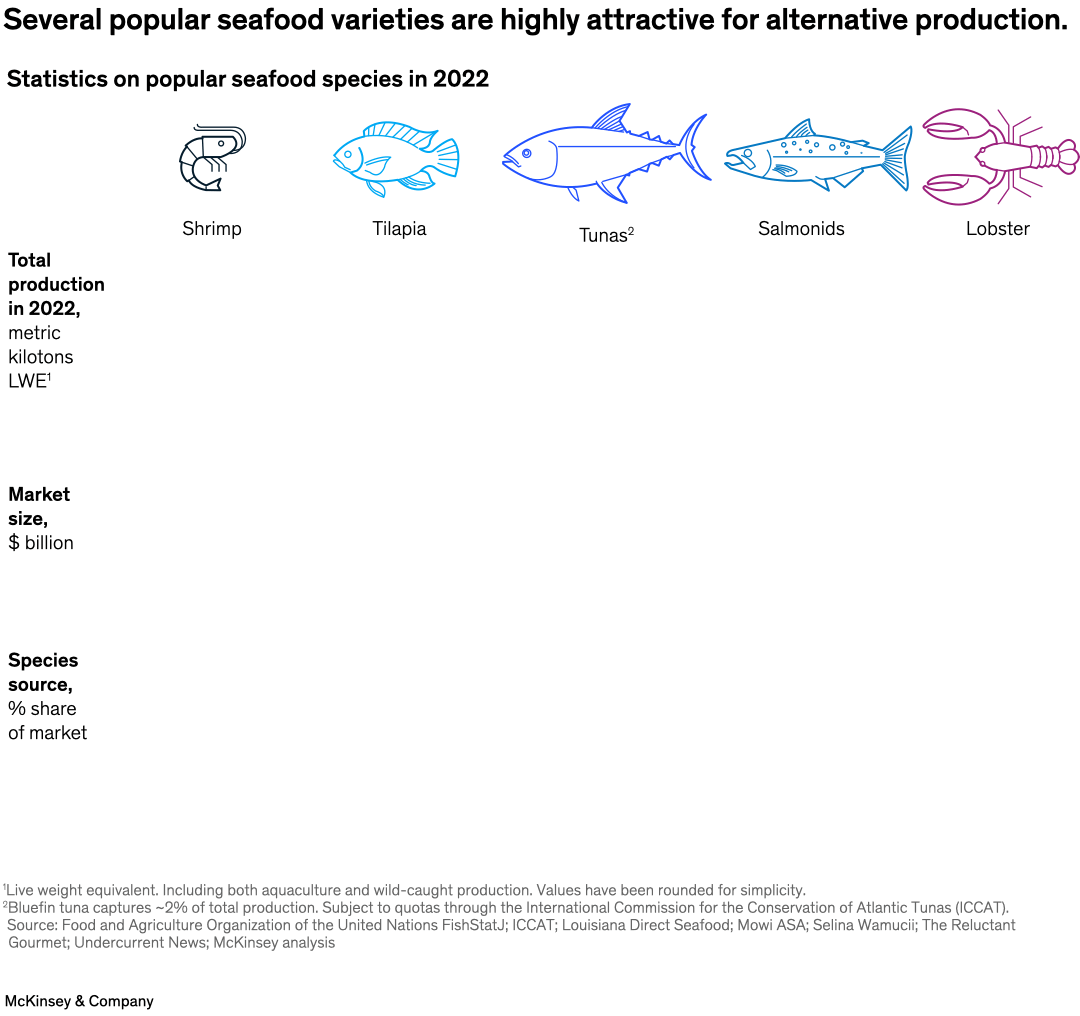Global demand for fish protein is expected to continue to grow. Yet the amount of wild-caught seafood remains flat, with more of the world’s fisheries being pushed to or beyond their limits. Partner Tom Brennan and colleagues say alternative seafood—plant-based, fermentation-enabled, and cultivated substitutes for fish—could fill some of the gap and provide high-end protein. Several of the most popular seafood varieties, including shrimp, tuna, and salmonids, are among attractive targets for alternatives.

Image description:
A 3-tiered comparison of popular seafoods that are highly attractive for alternative food production. There are five different types of seafood studied: shrimp, tilapia, tunas, salmonids, and lobster. Total production and market size in 2022 were the highest for shrimp (11,238 metric kilotons production and $77.9 billion to $122.4 billion market size) and the lowest for lobster (323 metric kilotons production and $6.5 billion to $9.0 billion market size). The species capture source for 2022 shows the wild-caught share of shrimp at 30%, tilapia at 11%, tunas at 99%, salmonids at 25%, and lobster at 98%.
Source: Food and Agriculture Organization of the United Nations FishStatJ; ICCAT; Louisiana Direct Seafood; Mowi ASA; Selina Wamucii; The Reluctant Gourmet; Undercurrent News; McKinsey analysis.
End of image description.
To read the article, see “The next wave: Alternative-seafood solutions,” September 18, 2023.